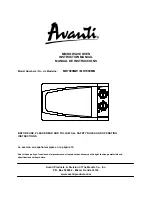
• is sealed, the food cooks in its own juices together with the marinades or spices you added.
Vitamins, minerals and juices are retained and the flavour of the food is enhanced.
• This makes the food healthier, more tender and more flavourful. As meat cooked sous vide is
more tender, it is possible to use cheaper cuts,
such as neck fillet, shank and shoulder, which are often tastier than the more expensive cuts.
As sous vide cooking requires that foods be vacuum packed individually, several items can be
cooked at the same time, as long as their cooking temperature is the same.
It is difficult to overcook food with sous vide, but the structure of the food can change slightly
during cooking. The food can be prepared in plenty of time before serving, making sous vide
perfect when you have guests.
Temperatures
The appliance has a temperature range of
45-90 °C in increments of 1 °C. Different temperatures are required for different foods and
different degrees of doneness. You can see sous vide temperatures and times in the table later
on in these instructions.
Cooking time
The cooking time does not depend on the weight of the food, but its thickness. The standard
cooking time is 8 hours. The time can be adjusted from 30 minutes to 72 hours. You can see
sous vide temperatures and times in the table later on in these instructions.
Foods for sous vide cooking
Meat is particularly suited to sous vide cooking, as it makes it more tender, juicy and
flavoursome, but vegetables and fish can also be cooked in this way.
We recommend sous vide cooking for the fol-lowing foods:
• Beef, veal, lamb, pork and game
• Chicken, turkey and duck
• Lean and oily fish, lobster tails and scallops
• Root vegetables such as potatoes, carrots, parsnips, beetroot and turnips
• Crisp vegetables such as peas, asparagus, corn, broccoli, cauliflower, aubergines, onions
and squash
• Hard fruits such as apples and pears
• Soft fruits such as mango, plums, apricots, peaches, nectarines, papaya and straw-berries





































